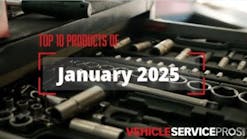DOT announces up to $20M in next-gen connected vehicle technologies for NYC
U.S. Transportation Secretary Anthony Foxx unveiled that New York City will receive up to $20 million to advance innovative Connected Vehicle (CV) and infrastructure application concepts, as part of the Department of Transportation (USDOT) national Connected Vehicle Pilot deployment program. New York City, along with Tampa, Fla. and Wyoming, was selected in a competitive process to develop and deploy vehicles that can anonymously communicate critical vehicle information not only with each other, but with surrounding infrastructure, such as stoplights. The announcement was made at the New York City Joint Management Traffic Center.
“Today’s announcement is a big step forward for the future of how we move in this country, from our rural communities to our biggest cities,” said Foxx. “It has been a core mission of the Department to support promising new technologies, and through these types of smart investments we are opening the door to a safer and cleaner network and expanding how future generations travel.”
New York City will install Vehicle to Vehicle (V2V) technology in vehicles that frequently travel in Midtown Manhattan, and Vehicle to Infrastructure (V2I) technology throughout Midtown. This includes upgrading traffic signals with V2I technology along avenues between 14th Street and 66th Street in Manhattan. This same technology will also be installed in Brooklyn. Up to 10,000 cars, busses, and limousines will eventually be retrofit with this innovative technology that may significantly reduce traffic congestion, lessen greenhouse gas emissions, and make drivers and pedestrians safer on the roads. Finally, roadside units will be equipped with connected vehicle technology along the FDR Drive between 50th Street and 90th Street. Making pedestrians and drivers safer was a core component of this site selection.
These connected vehicles will yield unprecedented levels of anonymous data that will be the basis for a multitude of innovative applications that will lead to smart vehicles, smart infrastructure, and ultimately smart cities. Research has found that the technology could reduce unimpaired vehicle crashes by 80 percent, while also reducing the 4.8 billion hours that Americans spend in traffic annually.
“I am honored that USDOT chose New York City to participate in this cutting edge Connected Vehicle pilot program,” said DOT Commissioner Trottenberg. “We look forward to testing this exciting safety technology on some of the toughest streets in the world.”
In 2012, the USDOT tested and proved connected vehicles’ life-saving potential in the largest real-world pilot of the technology to date, with over 2,700 equipped vehicles operating on the streets of Ann Arbor, Michigan. Participating vehicles used V2V safety technology to help everyday drivers avoid crashes as they traveled along their normal routines. Safety apps warned drivers of alerts such as braking vehicles ahead, vehicles in their blind spots, or impending red-light violations. USDOT’s efforts proved that connected vehicle technology indeed works in the real world and in a variety of vehicle types including cars, trucks, transit vehicles, motorcycles, and even bicycles.
The high level of interest that was prompted by the announcement of the Connected Vehicle Pilot Deployment Program is a testament to the promise of connected and automated vehicles. With the Connected Vehicle Pilot Deployment Program, the U.S. DOT is now focusing on accelerating the deployment of the technology in more regions throughout the nation. The U.S. DOT’s goals for the program are straightforward—advance deployment, measure impact, and uncover and address the technical and non-technical barriers to deployment in a hands-on way.
In addition, the Department announced in May steps to accelerate road safety innovation, including accelerating its timetable on a proposed rulemaking that will require the installation of V2V communications equipment in all new vehicles. The proposal is expected by the end of 2015. New cars with connected vehicle technology could be in our showrooms as early as 2016.
There will be more information about future pilot deployments in the coming months.

